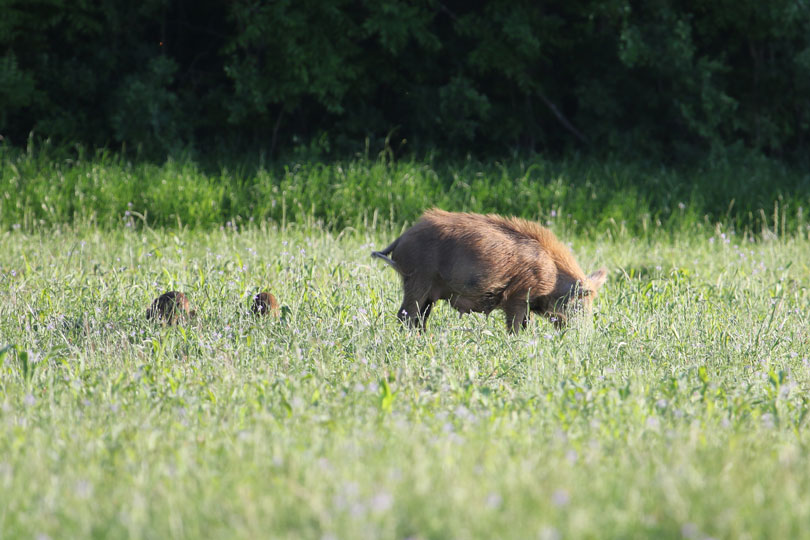The U.S. Department of Agriculture (USDA) is accepting applications from non-federal, not-for-profit partners for projects to help farmers, ranchers and private landowners trap and control feral swine, which is part of the Feral Swine Eradication and Control Pilot Program.
USDA’s Natural Resources Conservation Service (NRCS) is making $12 million available and will accept applications through Nov. 5 in eight priority states during its second round of project funding.
The Feral Swine Eradication and Control Pilot Program is a joint effort between NRCS and USDA’s Animal and Plant Health Inspection Service (APHIS).
The second round of funding is for partners to carry out activities as part of the identified pilot projects in select areas of Alabama, Hawaii, Mississippi, Missouri, North Carolina, Oklahoma, South Carolina and Texas.
Areas in Texas include:
- Dallam County
- Nueces, San Patricio and Bee counties
- Williamson and Milam counties
“The 2018 Farm Bill created this new pilot program to enable us to address threats to natural resources and agriculture posed by feral swine,” Acting Chief NRCS Kevin Norton said. “This second investment will play a crucial role in getting landowners assistance they need.”
These new pilot projects and areas were selected in coordination with NRCS state conservationists, APHIS state directors and state technical committees to address feral swine issues and damage in areas with high densities.
Pilot projects consist broadly of three coordinated components:
- feral swine removal by APHIS
- restoration efforts supported by NRCS
- assistance to producers for feral swine control provided through partnership agreements with non-federal partners.
Projects can be one to three years in duration and are planned to conclude at the end of Fiscal Year 2023 (Sept. 30, 2023).
The program was first announced in June 2019, and in the first round of funding, NRCS allocated almost $17 million for 20 projects across 10 states. Those projects will continue through the life of the 2018 Farm Bill in Alabama, Arkansas, Florida, Georgia, Louisiana, Mississippi, North Carolina, Oklahoma, South Carolina and Texas.
More Information
NRCS is now accepting proposals from non-federal, not-for-profit partners to provide landowner assistance for on-farm trapping and related services as part of the pilot projects described on the FSCP webpage NRCS will provide funding for these services through partnership agreements.
The funding limit for a single award is $1.5 million. NRCS may provide up to 75 percent of the costs for the partnership agreement. The remaining 25 percent must be committed by the partner through cash or in-kind contributions as listed in the Notice of Funding Opportunity.
Click here for additional information on specific pilot projects, including target areas and the roles for which partner assistance is being requested.
Applications must be submitted through grants.gov by 5 p.m. Eastern Time on Nov. 5, 2020. The opportunity number is USDA-NRCS-MULTI-FSCP-20-NOFO0001036.
Click here to see funding amounts and locations in 2019.
*Counties were updated in the story on Sept. 25.


We need to get serious about this.
Ranchers & farmers don’t need one more chore.
The cheapest most effective eradication measure is to shoot. We need a bill passed to be able to write off infrared scopes. Cheap & effective.
Wondering why Callahan county is not included in this funding . We border Eastland county and really need to be included in the funding to control wild hog populations
A tax exemption on night vision scopes would help in the fight against hog contol.
Personally, I’d like to get in on this. I’ve used thermal scope to slowly eradicate feral hogs in some portions of Alachua County Fl. Trap’s are effective but not complete. The real clean up measures are completed when thermals are used. There is that element of the more educated genders staying away from steel traps. Hogs know the steel odor and won’t take the baited Traps. Been hunting them going on ten yrs now. Small caliber weapons with well placed shots in the rural areas.
I caught 300 pigs the first year I used a Jager Pro trap.
JagerPro.com
I have (silenced) night vision, am in the Bexar County and willing to travel to Nueces, San Patricio and Bee counties. I’m willing to help.
I would like to join what I got to do
Why not let hunters go in and kill them off and send the meat to people who are starving you help the needy and liminate hog problem.